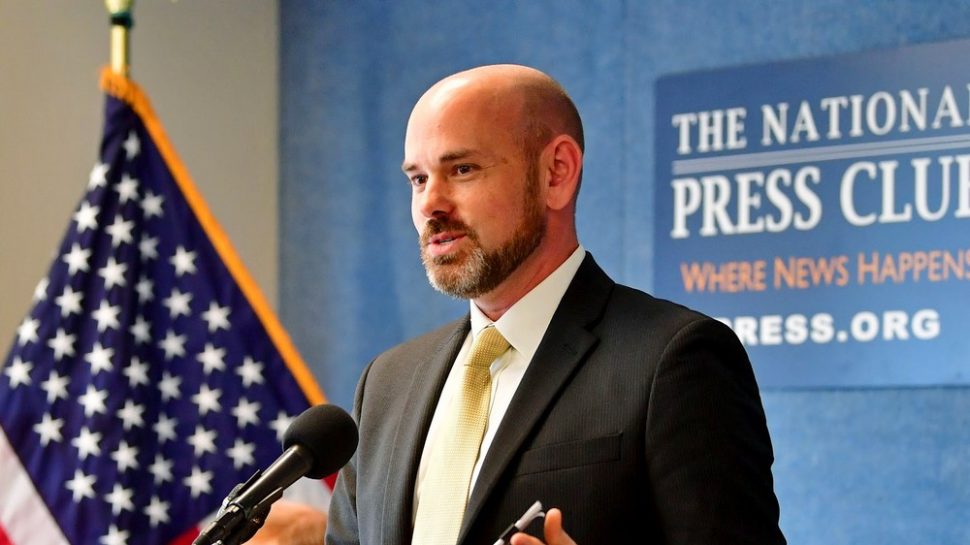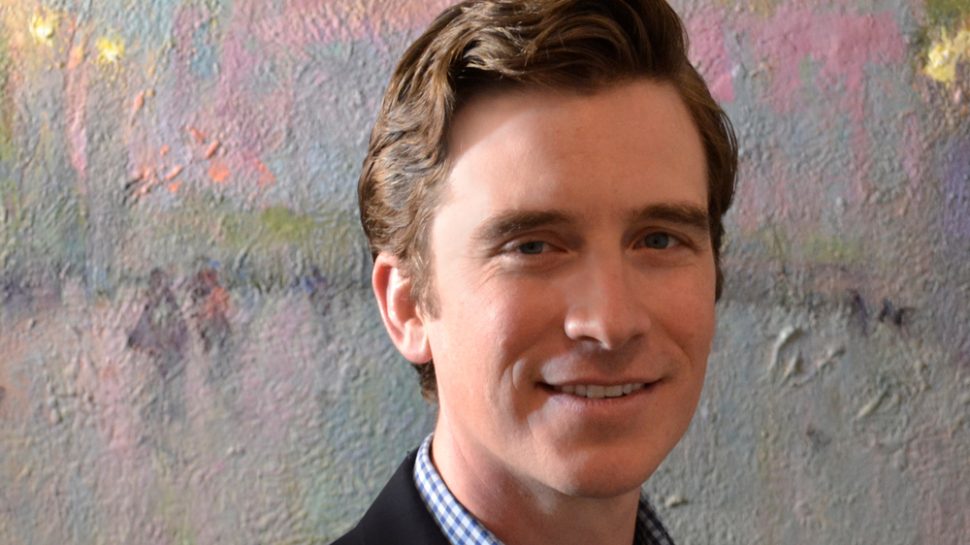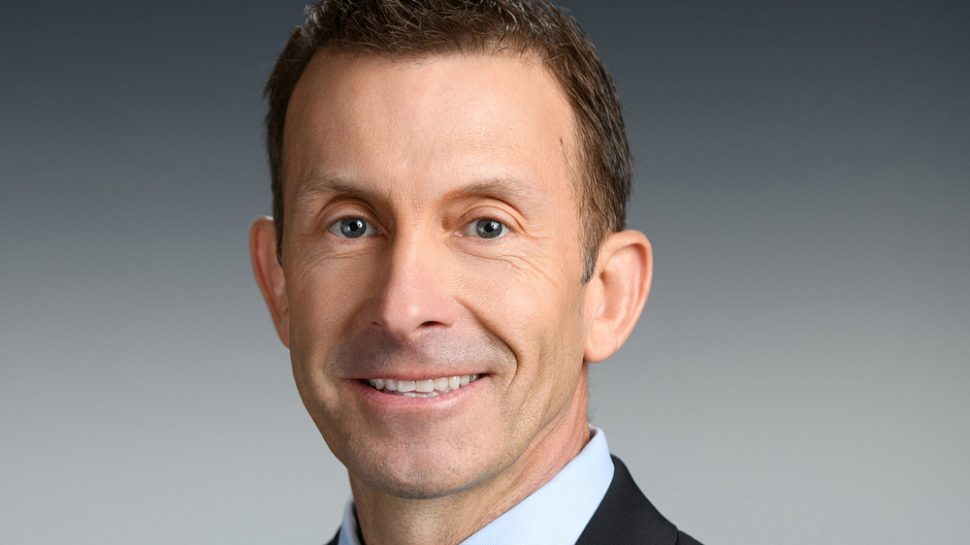
Is course profitability and environmental promotion compatible under the wider sustainability umbrella?
JEFF DANNER: The two are directly related. If the natural processes of an environment are disrupted, you are fighting nature, which costs money. Less maintenance and fewer provisions needed to “deal with” nature’s intent means less overhead. More resources can be allocated to promote and encourage participation which is the lifeblood of this great game.
RHETT EVANS: Absolutely! They have to be, that’s the essence of sustainability. Adoption of environmental practices results in lower maintenance costs that help sustain course profitability. A good example of this is the number of golf courses that are reducing the intensely maintained acreage on their golf courses and realizing significant savings in water and other maintenance costs.
STEVE ISAAC: Yes. Sustainability can result in operational savings over time and increase the attractiveness of the sport to existing and prospective golfers. This can lead to greater retention rates and an increase in participation. The growth in participation seen in many countries through the pandemic is likely to have been a consequence of people familiarizing themselves with golf facilities through increased access due to their temporary closure. This factor has added to an increased interest in one of the few sports that has been allowed to continue when others, mainly team sports, have seen severe restrictions as society has tackled Covid-19.
RAND JERRIS: The idea of golf courses having to trade off profitability to embrace sustainability is a false choice. In fact, we know that practices such as replacing turf with naturalized areas can shrink labor and resource costs while also having a positive environmental impact. At the same time, such “less is more” sustainability practices add to the natural aesthetic and make courses more appealing to both existing and new golfers. The two concepts are not mutually exclusive and the ability of a course to manage them congruently will be to their financial benefit, and the benefit of the surrounding environment.
JAY KAREN: 100% — yes. Achieving symbiosis with land, water and air need not be a drain on the profit and loss. Today’s golf course superintendents have become masters at managing the environment in tandem with the economic needs of the business.
Does government — at whatever level — have a role to play — and if so in what way?
JAY KAREN: Government will play a role no matter what business you are in, and whether you like it or not. Government can be helpful in supporting the sustainability of golf viewing it as an asset to the community and a draw for visitors. Taking a fair approach to property and sales tax treatment, rather than an opportunistic one, can mean the difference to a golf course between being in the red or black. Taking a collaborative posture towards environmental sustainability, before taking a policing approach, would yield better results with better land and water management practices.
JEFF DANNER: Yes. They actually play a very significant role. In a democracy, the government works for the people, and if the people can’t accept golf, neither will the government. Golf projects need government approval. Therefore, proper messaging to the public about what golf is and its benefits are critical for success.
STEVE ISAAC: Government must take the lead in sustainability through its policies on issues such as climate change, cleaner energy, reducing waste and pollution and reversing biodiversity loss. If we do not see this policy lead, then there is a danger that people will lose faith in the value of their contribution to addressing societal issues. Golf’s 37,000 facilities and 60 million players can be a powerful force for good.
RHETT EVANS: Maintaining strong government relations is crucial. That’s why GCSAA established a grassroots ambassador program where we align a member of GCSAA with each of the 535 members of Congress to establish relationships, communicate key information and show them firsthand what we are doing in the field through our best management practices to make golf more sustainable. Government officials have a lot on their plates. The more we provide them with key information and educate them on our issues, the more informed decisions they will make.
How does one define success for sustainable golf?
RAND JERRIS: A few years back, together with colleagues at the USGA, we attempted to write a definition for sustainable golf. We landed on the notion that golf will be sustainable if and when anyone who has an interest in playing the game has access to a golf course that is affordable, convenient, welcoming, offers a great experience and is environmentally responsible. There is a very intentional dual focus of this thought – that for golf to thrive long into the future, there have to be adequate numbers of golfers and golf courses, working together to address shared social, economic and environmental needs.
JAY KAREN: Maintaining a healthy diversity in both our supply and demand, so that we are not subject to broader stroke threats to our game and industry. The variety of clubs and courses, up and down the economic spectrum, is a good hedge against market forces. Once our customer base reflects the wide range of ages and demographics in America, then we will have an added hedge against any negative forces that could impact us.
“Sustainability can result in operational savings over time and increase the attractiveness of the sport to existing and prospective golfers.”
– Steve Isaac
STEVE ISAAC: A sport that is thriving in 50 years’ time and that provides a positive legacy for nature and communities.
RHETT EVANS: Sustainability, simply put, is all about our ability to meet the needs of the community by providing valuable green space while ensuring that future generations have a place to play golf.
JEFF DANNER: To me, it seems pretty straightforward. Success is defined by longevity. In other words, how long the golf course has been profitable without adverse effects on the environment.
If you could change one thing in golf unilaterally — what would it be and why?
JEFF DANNER: The perception of exclusivity. Golf needs to be inclusive to survive long term.
JAY KAREN: I would want the thousands of municipal parks and recreation divisions around our nation to be the primary engines that drive kids and adults into the game, much like they already do for every other sport under the sun. This is where families go to introduce their kids to lacrosse, soccer, baseball, football, basketball, etc. Why not golf? The collaborative possibilities are staring us in the face, and yet they remain untapped.
RAND JERRIS: To strip away the barriers to participation in the game. Non-golfers and lapsed golf continually cite cost, time to play, and their perceptions that golf is elitist and exclusionary as the reasons they don’t play. There are solutions to these challenges. If we approach each with a mindset of continuous improvement, we can help make golf accessible to all.
STEVE ISAAC: Its image. We need to challenge unhelpful perceptions that exist by talking about golf in positive terms and the contribution it can make to people’s health and wellbeing. We need a large body of evidence to do this. The GEO Foundation’s OnCourse® platform is a mechanism all facilities should be using to support golf’s sustainability credentials.
RHETT EVANS: A mulligan on the first tee — because I usually need it.
It’s #TreeTuesday and this sustainable golf success story from GEO Certified® @goodwood_golf highlights an edge of woodland experiment carried out by @GreenieRob and the team.
— GEO Foundation (@sustainablegolf) February 23, 2021
A great example of fostering nature and saving money in the process!#ForSustainableGolf pic.twitter.com/vxlsJqzDXz
How does golf deal with such high hurdles in taking so much time, costing so much and being very challenging to play?
RAND JERRIS: Broad and forward-thinking innovation is key to tackling golf’s challenges. Whether that’s building smaller courses that are closer to more populated urban areas, using technology to better track and address pace of play issues, constructing and encouraging the use of more forward tee boxes or thinking about golf outside of the 18- or nine-hole constructs – it will require thinking out of the traditional box and welcoming new perspectives and ideas, all while keeping the spirit of the game at the core.
JAY KAREN: These hurdles are merely perceptions. We know from observation and experience that once a person experiences “shot euphoria” –striking the sweet spot of an iron and watching the ball go where you wanted it to go — these hurdles start to miraculously disappear. Once they find their “tribe” of friends and competitors to play with, those hurdles no longer exist. Plus, people can find inexpensive golf pretty easily, they could buy used equipment, they could play nine holes or less and they could tee up from an easier set of tee boxes.
JEFF DANNER: Golf has to be willing to adapt to an evolving world. Facilities that deviate from the perceived 18-hole, par 70-72 standard should be more widely accepted and promoted. Courses that cater to a broader range of budgetary and time constraints will win the day. Facilities also need to encompass a broader definition of fun. What may be thrilling and engaging for some may be intimidating and off-putting for others. Intimidation is a huge factor in preventing new players from pursuing the game.
STEVE ISAAC: We need to promote alternative forms of the sport, including shorter formats, which can be enjoyed in 1-2 hours and are affordable and accessible for families and young people. We also need to talk about the many social, health and wellbeing benefits that it provides to millions of golfers around the world who enjoy being out on the course in the company of family and friends.
“Golf & Water: Case studies in water stewardship” from @ASGCA. Good design = more sustainability. More than a dozen case studies of smart decisions & good partnerships benefiting communities & the game of golf. (https://t.co/ElVqJWfuOO) @ToroGolf @RainBirdGolf pic.twitter.com/8DCJ0IjfcK
— ASGCA Home Offices (@ASGCA) April 25, 2020
The most concerning issues facing sustainable golf — short and long term is what?
STEVE ISAAC: Short-term would be the lack of recognition of the size of the challenges we are facing, lack of knowledge of the programs in place to try and find solutions, and the lack of long-term planning at most golf facilities. Long-term is the impact of climate change and extreme weather events, and how golf adapts to cope with more drought, flooding, storms and rising sea level.
JEFF DANNER: I believe we’ve touched on them quite a bit here. Time, money, inclusivity, fun, and resources all need to be carefully considered. Everything in our world is linked. So, we have to maintain a well-rounded strategy.
RHETT EVANS: Challenges associated with environmental stewardship, profitability and community benefits will always be an important part of sustainable golf. The golf industry, along with golfers, lawmakers and communities should continue working together to better understand and communicate the issues and relevant solutions.
“Courses that cater to a broader range of budgetary and time constraints will win the day.”
-Jeff Danner
JAY KAREN: Short term: Supply and demand forces, as well as other factors, are putting a downward pressure on revenues at golf courses in mature markets. Course owners need to take more control over their pricing and revenue strategies to cause revenue to outpace expenses. Long term: The perception of golf needs to be as egalitarian as is the perception of eating out. Just like with restaurants, in golf there’s something for everyone on every budget. If we do not embrace this, we run the risk of a slow decline.
RAND JERRIS: Water, water costs, water availability, water quality. We happen to think that water is going to be the biggest obstacle to the long-term health of the game. We’re already seeing this in certain parts of the country and the pressures will only continue to grow.
After completing EIGCA’s Raising the Standard of Sustainable Golf Course Development programme #RSSGCD, 2 members @WestenborgGolf & @creative_golf have been added to the Sustainable Design Register https://t.co/WTMG8jR7BE. View their video case studies https://t.co/b9yI9Du3la pic.twitter.com/ZuLJuuT0cq
— EIGCA(@EIGCA) January 27, 2021
Sustainability Series
Part 1 – Debate growing – questions abound — answers needed
Part 2 – Debate growing – questions abound — answers needed
Part 3 – Innovative program bringing new golfers forward
Part 4 – “The Time Factor”
Part 5 – Water watch worrisome
Part 6 – J. Bryan Unruh, Institute of Food & Agricultural Science,
Part 7 – Repurposing facilities, Minnesota’s momentum
The participants
Jay Karen
Chief Executive Officer
National Golf Course Owners Association (NGCOA)

Jay Karen is the CEO of National Golf Course Owners Association, based in Charleston, SC, where he leads the golf industry’s trade association and initiatives to support the success of the golf course business. In his role at NGCOA, he has chaired the board of the industry-wide advocacy coalition, We Are Golf, and served on the Golf USA Tee Time Coalition board, a joint initiative with the PGA of America, and the advisory board of the World Golf Hall of Fame.
Steve Isaac
Director – Sustainability
The R&A

Has led The R&A’s sustainability drive for 18 years following 18 years as a consultant agronomist with STRI. He established and led on the Golf Course 2030 climate change, resource constraints, regulation initiative, the sustainable development program for R&A championships (GreenLinks), including The Open and the AIG Women’s Open and the support for greenkeeper education.
Isaac has spoken at many events across Africa, Asia, Australasia, Europe, North and South America to promote The R&A’s advocacy of sustainability.
Jeffrey Danner
Senior Design Associate
Greg Norman Golf Course Design
ASGCA

Senior Design Associate with Greg Norman Golf Course Design in West Palm Beach, Florida. Passionate about growing the game and making golf accessible for everyone to enjoy. Danner’s design philosophy is to maintain a strict sense of environmental awareness and sensitivity while implementing a creative strategy to stimulate the mind while engaging golfers of all abilities.
Rhett Evans
CEO
Golf Course Superintendents Association of America

Rhett Evans joined the GCSAA team in July 2009 as chief operating officer and was promoted to CEO in January 2011. Under Evans, GCSAA has elevated the superintendents’ and industry’s voices through advocacy efforts at the national and grassroots levels. In addition, through Evans’ leadership of GCSAA and its philanthropic organization, the Environmental Institute for Golf, the discussion of sustainability has progressed from theory to action at golf facilities.
Rand Jerris
Senior Managing Director, Public Services
USGA

A member of the USGA’s Executive Leadership Team, Rand Jerris oversees a variety of organizational functions including research, science and innovation; the USGA Green Section; the USGA Golf Museum; Regional Affairs; and strategic planning. He earned his doctorate in art and archaeology from Princeton University and bachelor’s and master’s degrees from Williams College, and currently serves on the board of the Environmental Institute for Golf, the executive board for We Are Golf, and the Board of Overseers for the Malcolm Baldrige Performance Excellence Program.